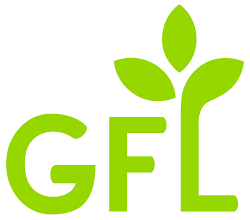LimaCharlie Inc: Be Disaster-Ready: Building an Emergency Kit and Knowing Safe Spaces
)
Here’s the thing—building an emergency kit doesn’t have to feel overwhelming. Start small. Add the basics first, then build it out over time. Before you know it, you’ll have something that’s tailored perfectly for your family.
Here are the must-haves:Here’s the thing—building an emergency kit doesn’t have to feel overwhelming. Start small. Add the basics first, then build it out over time. Before you know it, you’ll have something that’s tailored perfectly for your family.
Here are the must-haves:
- Water: One gallon per person per day for at least three days (don’t forget the pets).
- Food: Three days of easy, non-perishable items—canned goods, protein bars, dried fruit.
- Manual can opener (because your electric one won’t help if the power’s out).
- Flashlights and extra batteries
- First aid kit
- Medications: At least a week’s supply.
- Important documents: Driver’s license, birth certificates, passports, insurance papers, medical records—kept in a waterproof pouch. Just as important, make digital copies stored in the cloud or on an encrypted drive. After disasters, many survivors apply for aid with nothing to show who they are or what they’ve lost. Having backups makes recovery far easier.
- Cash: Small bills, just in case ATMs or card readers are down.
- Battery-powered or hand-crank radio
- Chargers and power banks
- Clothing, sturdy shoes, and blankets
- Hygiene supplies: Soap, sanitizer, wipes, feminine products.
- Whistle, dust masks, gloves
- Baby & pet supplies
- Local maps (old-school but reliable if GPS fails).
- Multi-tool or small toolkit
Now, let’s be honest—this list sounds a little technical until you make it personal. Think about your real daily needs: spare glasses, dietary items, or a toy that helps your child feel safe. Some families even keep a smaller “go bag” in the car or at work so they’re never caught off guard.
Safe Areas to Remember
A kit is only half the plan. You also need to know where to go. Different disasters call for different safe spots:
- Tornadoes: Best bet is a basement. No basement? Choose a small interior room on the lowest floor—bathroom, closet, or hallway—away from windows.
- Hurricanes: Shelter in an interior, windowless room or closet until the storm passes.
- Floods: Head for higher ground immediately. And here’s the catch—don’t drive through floodwaters, no matter how shallow they look.
- Wildfires: Follow evacuation orders. Safe zones are often schools, fairgrounds, or wide-open parking lots clear of vegetation.
- Winter storms: Stay indoors. Use a central room to conserve heat and pile on the blankets.
Communities also open shelters—usually schools, churches, or civic centers—when conditions get rough. Check in advance with your local emergency office or the Red Cross so you know where to go before you ever need to.
Preparedness for Your BusinessIt’s not just families who need a plan. Disasters can disrupt businesses too, sometimes overnight. A wildfire, flood, or even a long power outage can force closures, damage property, and cut off supply chains. For small businesses, even a few days offline can be hard to bounce back from.
That’s why it helps to think about a simple business continuity plan. Keep copies of payroll records and key contacts in more than one place, back up your data, and decide how you will reach employees and customers if regular communication is down. Programs like Outsmart Disaster from the California Office of the Small Business Advocate offer free tools to help companies map out risks and build resilience. Even a few proactive steps can mean reopening quickly instead of starting over from scratch.
Housing as Part of Preparedness
Food and water usually top preparedness lists, but housing is just as critical. After disasters, many families find themselves displaced overnight. Having a plan—whether that’s identifying local shelters, noting pet-friendly hotels, or talking with friends and relatives about possible stays—can ease the stress of recovery.
It’s also smart to see what government agencies and community partners can provide. In many disasters, agencies coordinate temporary housing, from group shelters and short-term rentals to longer-term options that keep families safe while they rebuild. These programs can be life-changing for people who have lost everything overnight.
The simple question is: where would you sleep if home wasn’t an option? Answering it now makes a tough situation far easier later.
Why It MattersPreparedness isn’t about expecting the worst. It’s about building confidence. A stocked kit, updated digital records, and a housing plan turn panic into calm action. Families who prepare ahead often recover faster, stay safer, and feel less overwhelmed when disaster does strike.
Looking AheadPreparedness isn’t a one-time task—it’s ongoing. As 2025 winds down, use it as a checkpoint: refresh your supplies, review your safe areas, and make sure your digital backups are up to date. And if you’re looking for fresh ideas and tools, Disasters Expo USA 2025 is a great chance to learn from experts and see how communities everywhere are strengthening resilience.
Sources:
- FEMA / Ready.gov, “Build a Kit” ready.gov
- American Red Cross, “Emergency Preparedness Kit” redcross.org
- NOAA National Centers for Environmental Information, “Billion-Dollar Weather and Climate Disasters (1980–2024)” ncei.noaa.gov
- American Red Cross, “Disaster Safety and Preparedness” redcross.org
- California Office of the Small Business Advocate, “Outsmart Disaster Program” outsmartdisaster.calosba.ca.gov
- American Red Cross, “Disaster Safety and Preparedness” redcross.org







